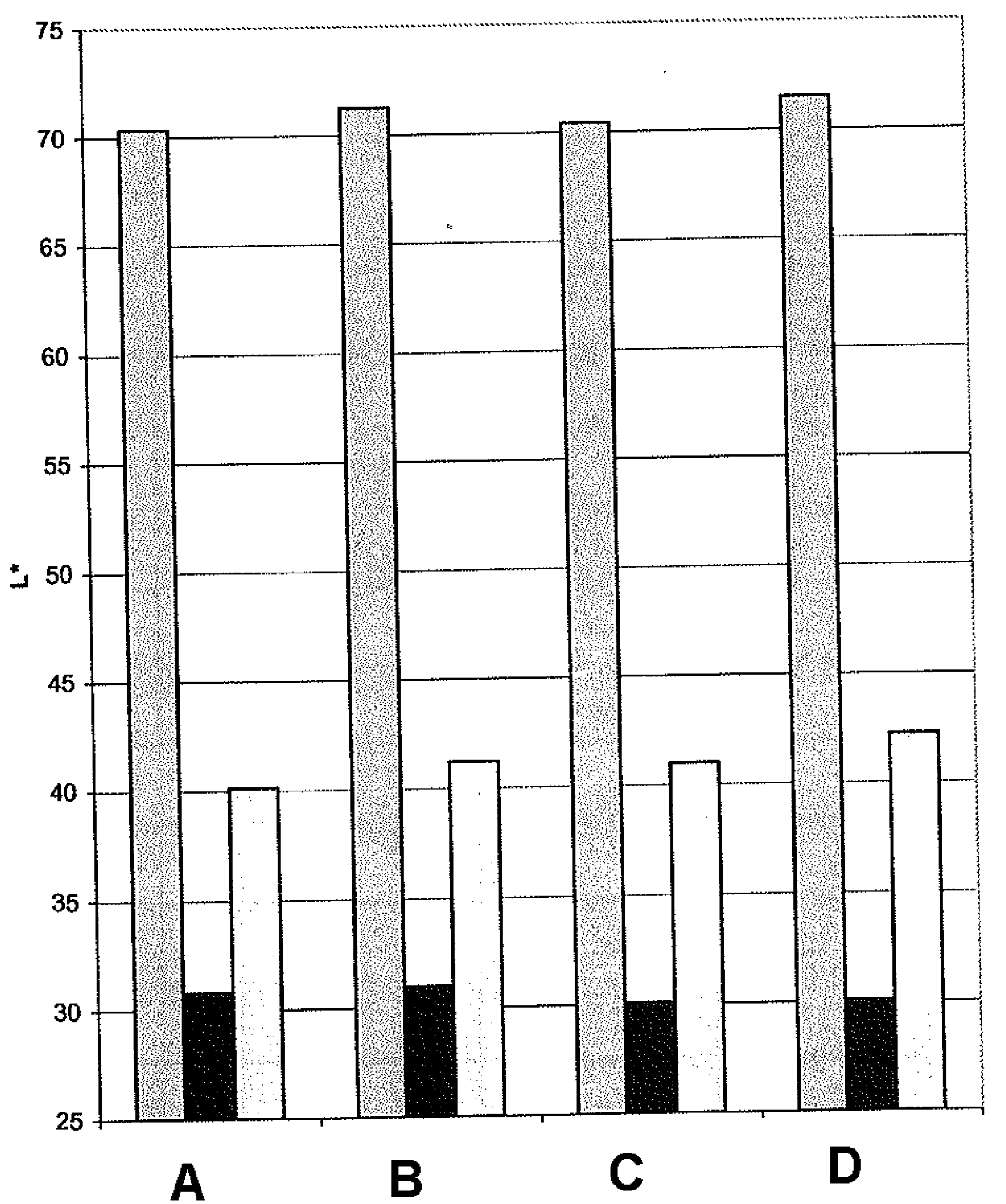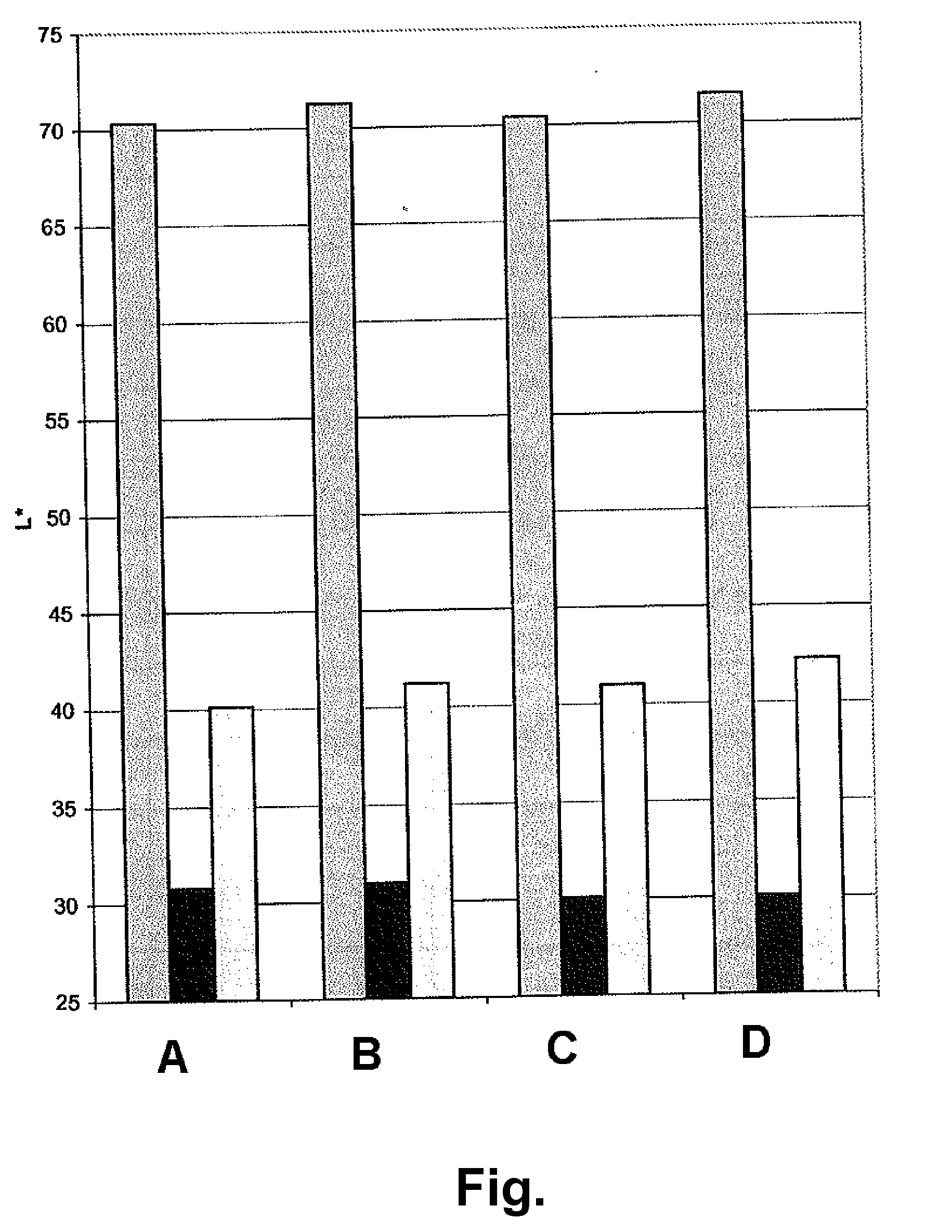Electro-optic assemblies, and adhesives and binders for use therein
a technology of electrophoretic assemblies and adhesives, applied in the direction of optical elements, film/foil adhesives, instruments, etc., can solve the problems of inadequate service life of these displays, gas-based electrophoretic media is susceptible to the same types of problems, and the use of these assemblies is prevented. to achieve the effect of reducing the volume resistivity of the polymeric adhesive material
- Summary
- Abstract
- Description
- Claims
- Application Information
AI Technical Summary
Benefits of technology
Problems solved by technology
Method used
Image
Examples
example 1
Synthesis of TMXDI-PPO Polyurethane with Tetrabutylammonium Hydroxide Neutralization
[0083]The polyurethane prepared in this Example is similar to the prior art polyurethane produced in Example 2 below, except that it has a higher acid content.
[0084]A prepolymer was prepared in a three-necked round bottom flask equipped with a magnetic stirrer, a condenser, and a nitrogen inlet. The reaction was carried out under nitrogen. Tetramethylxylene diisocyanate (TMXDI, supplied by Aldrich Chemical Company, 16.34 g, 0.067 mole), poly(propylene glycol) diol (supplied by Aldrich Chemical Company, average Mn ca. 2000, 33.5 g, 0.0168 mole), and dibutyltin dilaurate (supplied by Aldrich Chemical Company, 0.04 g) were charged into the flask and the mixture was heated at 90° C. in an oil bath for 2 hours. Afterwards, a solution of 2,2-bis(hydroxymethyl)propionic acid (from Aldrich, 3.35 g, 0.025 mol) in 1-methyl-2-pyrrolidinone (from Aldrich, 8.5 g) was added to the flask and the reaction allowed to...
example 2
Synthesis of TMXDI-PPO Polyurethane with Triethylamine Neutralization (Control)
[0085]Example 1 was repeated up to the point at which an NCO-terminated prepolymer was obtained and the temperature of the reaction mixture lowered to 70° C. Thereafter triethylamine (from Aldrich, 2.4 g, 0.0237 mole) was added slowly over a period of 30 minutes to neutralize the carboxylic acid. The reaction mixture was then slowly added to de-ionized water (100 g) at 35° C. in a jacketed 500 mL glass reactor under mechanical stirring and nitrogen atmosphere to convert the prepolymer to a water-borne dispersion. The chain extension reaction and the final heating of the dispersion to 50° C. were carried out in the same manner as in Example 1.
example 3
Preparation of Experimental Single Pixel Displays from the Materials Prepared in Examples 1 and 2
[0086]The polyurethanes prepared in Examples 1 and 2 above were separately coated on to metallized release film in a (dried) thickness of about 20 μm. Drying of the coated polymeric films was carried out in a belt-transport drying oven at 60° C. and a transport rate of 1 ft / min (about 5.1 mm / sec); these conditions are known to reduce the content of NMP to a very low level. Separately, an electrophoretic medium was prepared substantially as described in Example 4 of U.S. Pat. No. 7,002,728 and coated on to the indium tin oxide (ITO) coated surface of a 5 mil (127 μm) poly(ethylene terephthalate) (PET) film coated on one surface with ITO. The two sub-assemblies were laminated to each other with the electrophoretic layer in contact with the lamination adhesive to form a front plane laminate as described in the aforementioned U.S. Pat. No. 6,982,178. The release sheet was peeled from the fr...
PUM
| Property | Measurement | Unit |
|---|---|---|
| diameter | aaaaa | aaaaa |
| thickness | aaaaa | aaaaa |
| thickness | aaaaa | aaaaa |
Abstract
Description
Claims
Application Information
 Login to View More
Login to View More - R&D
- Intellectual Property
- Life Sciences
- Materials
- Tech Scout
- Unparalleled Data Quality
- Higher Quality Content
- 60% Fewer Hallucinations
Browse by: Latest US Patents, China's latest patents, Technical Efficacy Thesaurus, Application Domain, Technology Topic, Popular Technical Reports.
© 2025 PatSnap. All rights reserved.Legal|Privacy policy|Modern Slavery Act Transparency Statement|Sitemap|About US| Contact US: help@patsnap.com


